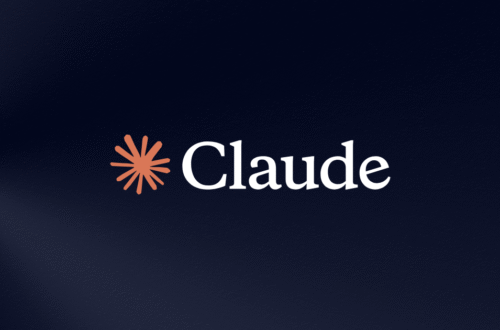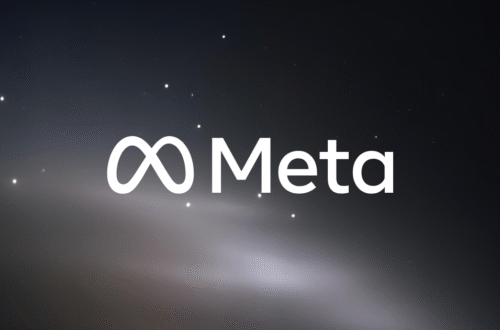Just when you thought the AI arms race was hitting a predictable rhythm, Anthropic decided to flip the table. On June 20, 2024, they dropped Claude 3.5 Sonnet, a model that isn’t just an incremental update; it’s a direct shot at OpenAI’s wunderkind, GPT-4o. The dust from GPT-4o’s flashy debut barely settled, & now we have a new contender claiming to be faster, smarter, and, crucially, cheaper. So, is it all marketing hype, or has the king of LLMs just been put on notice? Let’s cut through the noise & see what’s actually going on.
First Off, What IS Claude 3.5 Sonnet?
Let’s get one thing straight: this isn’t Claude 4. Anthropic’s naming is a bit… unique. Their top-tier model is Claude 3 Opus, the balanced one is Sonnet, & the fast one is Haiku. Instead of releasing Opus’s successor, they massively upgraded their mid-tier model. Claude 3.5 Sonnet is now their flagship, a workhorse model designed to be the default choice for most tasks. It replaces the original Claude 3 Sonnet and is being positioned as the go-to for complex tasks like context-sensitive customer support, multi-step workflow orchestration, & code generation. It’s available for free on Claude.ai & in the Claude iOS app, with the same generous free-tier limits as before. For developers, the API is live & ready to rock.
The Speed & Cost Showdown: A Numbers Game
This is where things get really interesting for anyone actually building stuff with AI. Speed & cost are the two biggest hurdles for scaling any AI-powered product. A model can be a genius, but if it’s slow as molasses & costs a fortune to run, who cares?
Let’s Talk Speed
Anthropic claims Claude 3.5 Sonnet operates at twice the speed of their previous top model, Claude 3 Opus. That’s a huge claim. In practice, this means less waiting around for responses, which is critical for real-time applications like chatbots or coding assistants. GPT-4o made waves with its own impressive speed, but early user reports suggest 3.5 Sonnet feels incredibly snappy, often delivering complex outputs almost instantaneously. For developers, lower latency means a better user experience, plain & simple.
Show Me the Money
Here’s the gut punch to OpenAI’s wallet. Claude 3.5 Sonnet is priced aggressively, especially when compared to its performance level. Let’s look at the API pricing per million tokens (a token is roughly ¾ of a word):
- Claude 3.5 Sonnet: $3 for input / $15 for output
- GPT-4o: $5 for input / $15 for output
Yeah, you read that right. The output cost is identical, but Claude 3.5 Sonnet is 40% cheaper for input tokens. Why does that matter? Most real-world applications involve feeding the model a ton of context (the input) to get a specific result (the output). Think about summarizing long documents, analyzing code repositories, or using Retrieval-Augmented Generation (RAG). In these input-heavy scenarios, the cost savings with Sonnet will stack up fast. Anthropic is essentially subsidizing the most common business use cases, a ridiculously smart move.
The Intelligence Test: Brains vs. Benchmarks
Okay, so it’s fast & cheaper. But is it dumber? Nope. In fact, according to Anthropic, it’s the smartest model they’ve ever released. This is where it gets wild: a mid-tier named model is outperforming their previous high-end one.
Benchmark Bragging Rights
Benchmarks aren’t everything, but they’re a useful yardstick. And Claude 3.5 Sonnet’s report card is stacked. It sets new industry benchmarks for graduate-level reasoning (GPQA), undergraduate-level knowledge (MMLU), & coding proficiency (HumanEval). In internal tests, it solved 64% of problems in an agentic coding evaluation, a massive leap from Claude 3 Opus’s 38%. It consistently outperforms GPT-4o on reasoning & knowledge benchmarks, and while it’s a hair behind on math, it’s a clear winner in coding. You can see the full chart in their announcement post, but the takeaway is clear: this model isn’t just a souped-up Sonnet; it’s an Opus-killer that’s also gunning for GPT-4o.
Beyond the Numbers: Nuance & Vision
The new model is also said to have a much more sophisticated grasp of nuance, humor, & complex instructions. It’s better at writing high-quality content with a natural, human-like tone, which is great news for anyone tired of robotic-sounding AI prose. Its vision capabilities have also been upgraded. Anthropic says it can accurately transcribe text from imperfect images, like distorted pictures or low-res scans. This is a game-changer for retail, logistics, & finance, where you’re constantly pulling data from messy real-world visuals.
The Secret Weapon: Meet “Artifacts”
This might be the single coolest feature of the new Claude. Anthropic introduced a new UI element called Artifacts. When you ask Claude to generate content like code snippets, text documents, or even SVG website designs, that content now appears in a dedicated window right next to your conversation. It’s a live workspace. You can ask Claude to make changes, & the Artifact updates in real-time. You’re no longer just copying & pasting code from a chat box into your editor. You’re co-creating with the AI in an interactive environment. It’s a brilliant fusion of conversational AI & a practical toolkit, and it’s something OpenAI doesn’t have. For developers, designers, & writers, this is an immediate, tangible workflow improvement.
The GPT-4o Counter-Punch: Don’t Count It Out
So, is GPT-4o dead in the water? Not so fast. OpenAI’s ace in the hole remains its native, jaw-dropping multimodality. The real-time voice & video interaction shown in their demos is still futuristic, sci-fi stuff that Claude can’t touch. GPT-4o is a “personal assistant” AI in a way Claude isn’t trying to be. If your primary need is a conversational partner that can see your screen, talk to you like a person, & analyze things on the fly through your phone camera, GPT-4o is still the undisputed champion. It owns the consumer-facing, highly interactive space for now.
The Verdict: Which One Should You Actually Use?
As always, it depends on what you’re doing. There’s no single “best” AI. But we can make some pretty clear recommendations.
Go with Claude 3.5 Sonnet if:
- You’re a developer building an application that needs a powerful, fast, & cost-effective reasoning engine. The cheaper input costs & superior coding skills are a killer combo.
- Your work involves generating or iterating on content (code, articles, designs). The Artifacts feature is a genuine productivity booster.
- You’re running input-heavy tasks like document analysis or RAG, where the 40% cheaper input cost will save you a significant amount of money.
Stick with GPT-4o if:
- You need best-in-class, real-time voice & video capabilities. No one else comes close right now.
- You’re building a consumer-facing app that relies on a “personal assistant” vibe.
- You need the absolute bleeding edge of general knowledge for a very niche task where GPT-4o might still have a slight edge.
A Quick Note on Best Practices
With great power comes… well, you know the drill. Both models are incredibly capable, which means they can be used for incredible good or incredible mischief. Always remember that these are tools. They can hallucinate info, reflect biases from their training data, & be manipulated. Human oversight isn’t just a good idea; it’s essential. Use these models to augment your skills, not replace your judgment. For more on this, both Anthropic & OpenAI have extensive resources on responsible AI use.
Ultimately, the release of Claude 3.5 Sonnet is fantastic news for everyone. It proves that the AI space is far from a one-horse race. Anthropic just delivered a model that seriously competes with, and in many important categories surpasses, GPT-4o, all while undercutting it on price. GPT-4o may still be the flashy, multi-talented celebrity, but Claude 3.5 Sonnet is the quiet, focused genius in the lab that’s getting the hard work done faster, better, & for less money. Your move, OpenAI.


